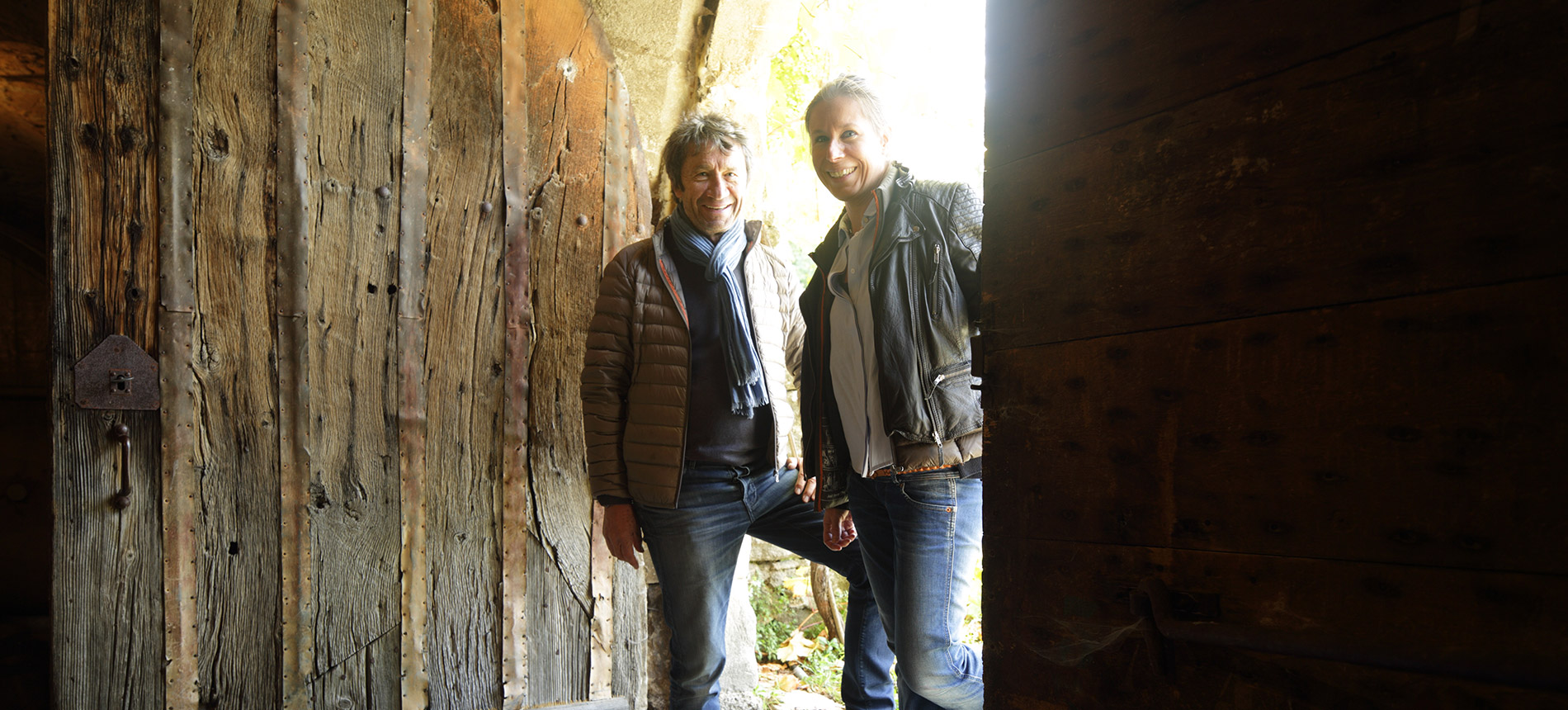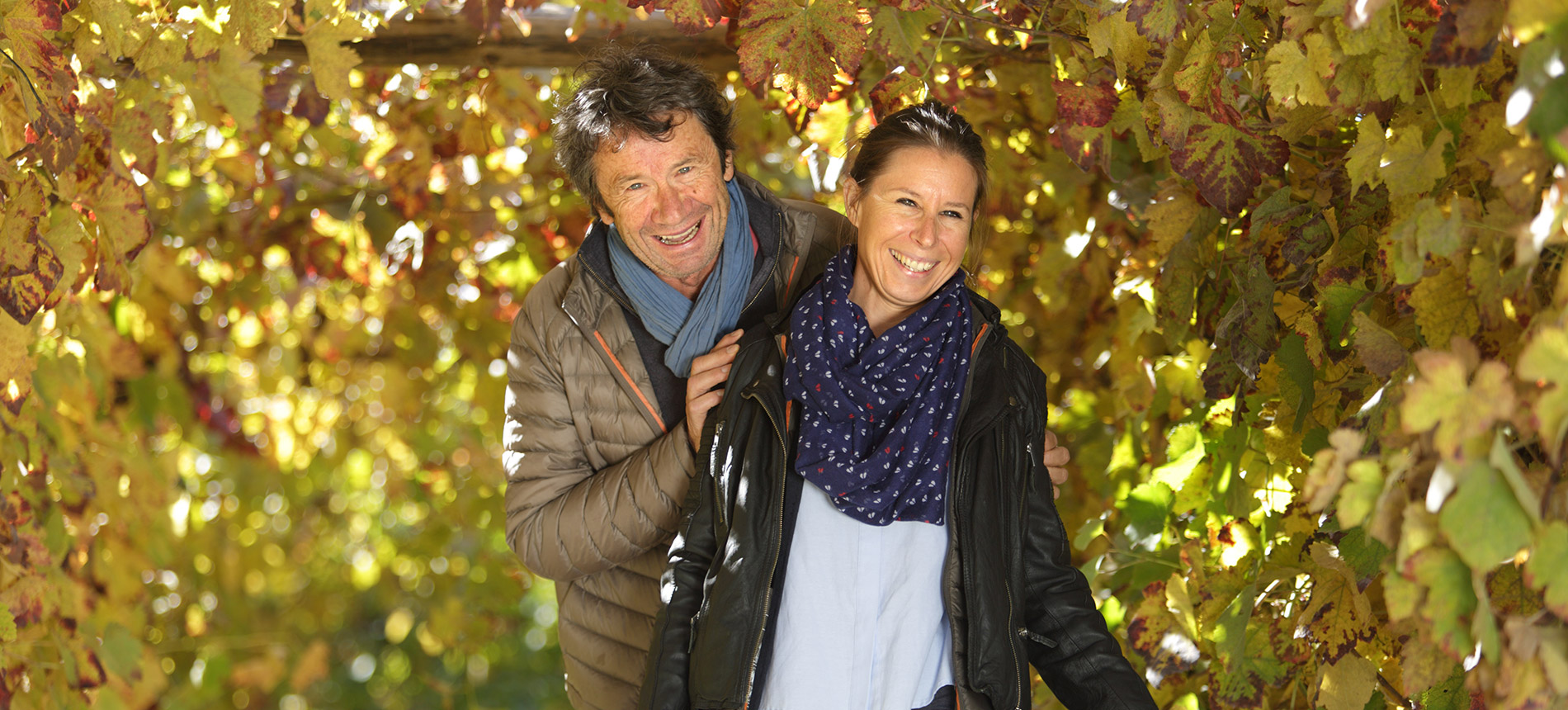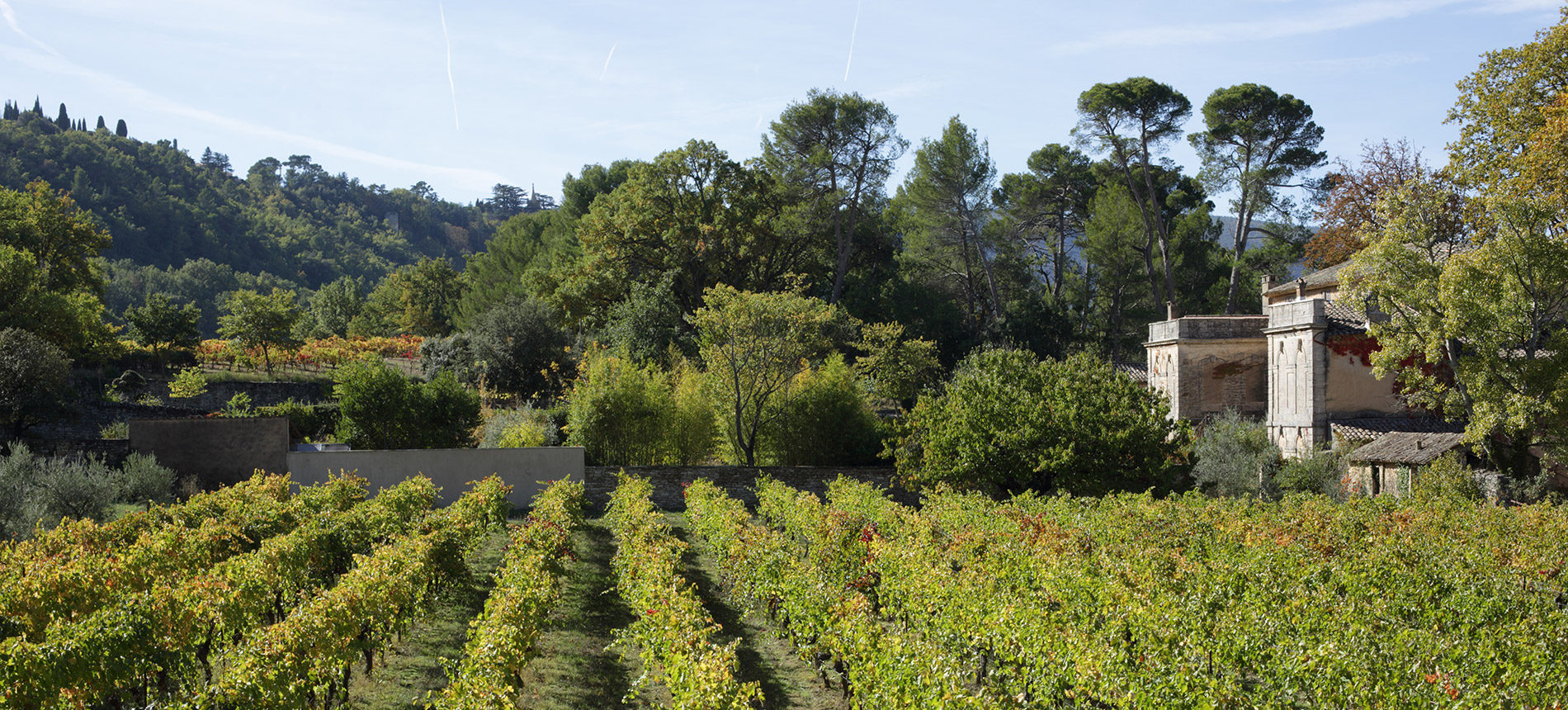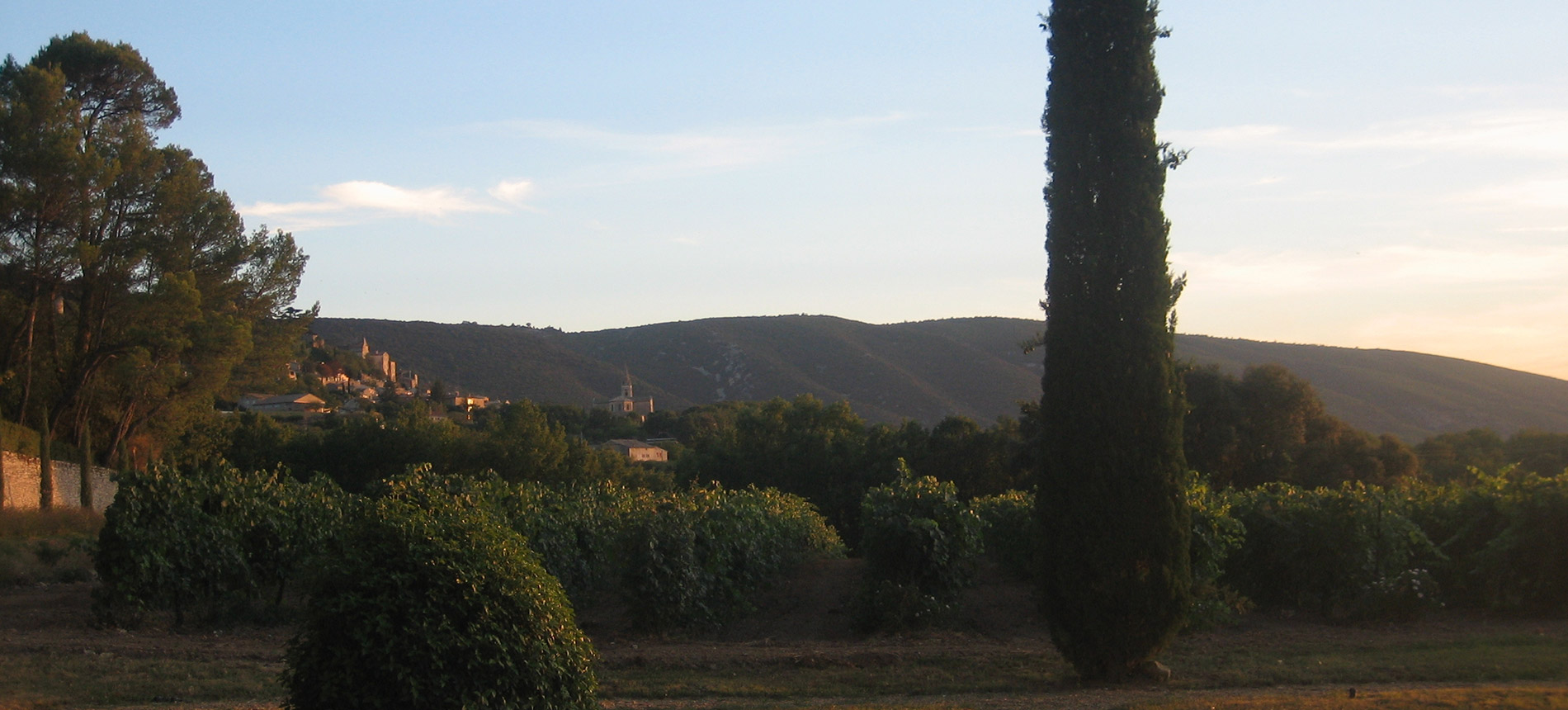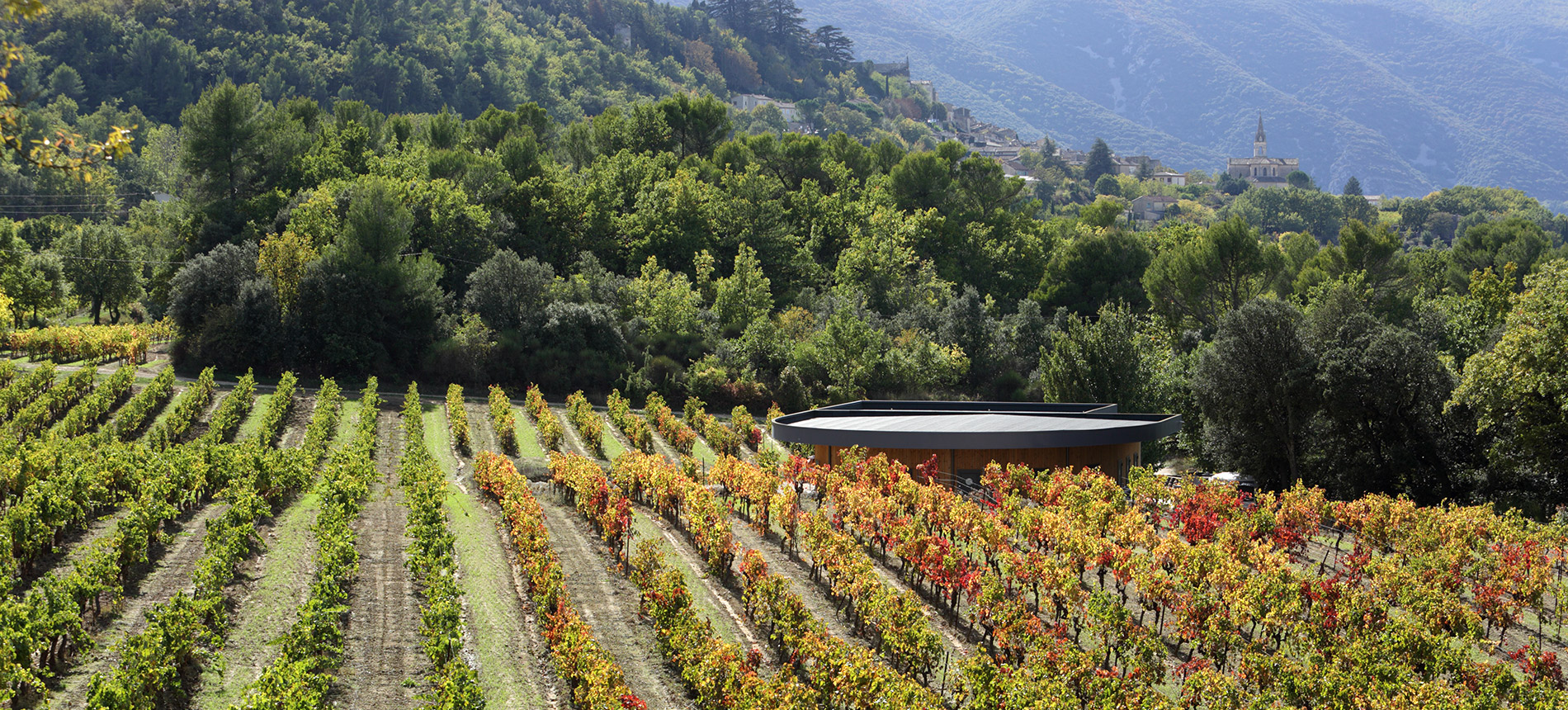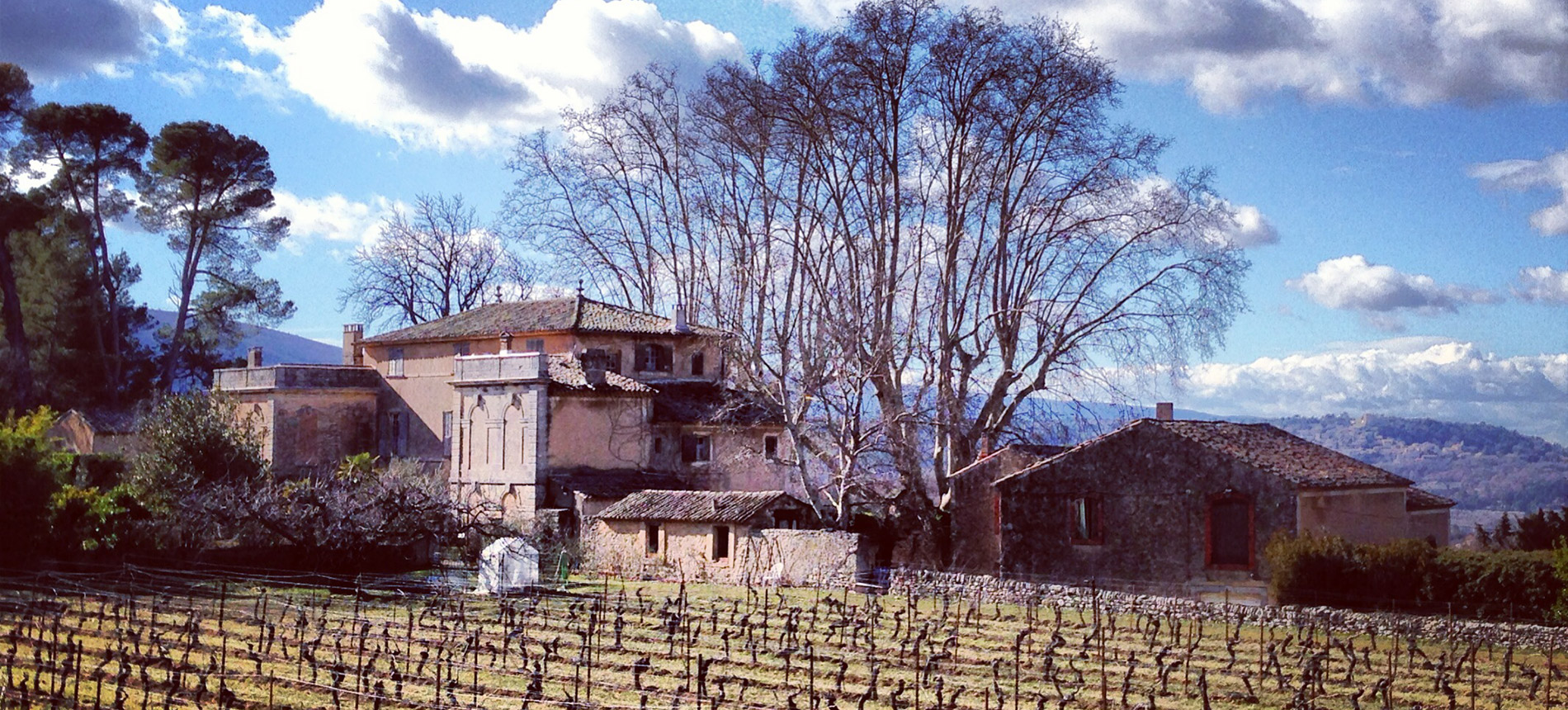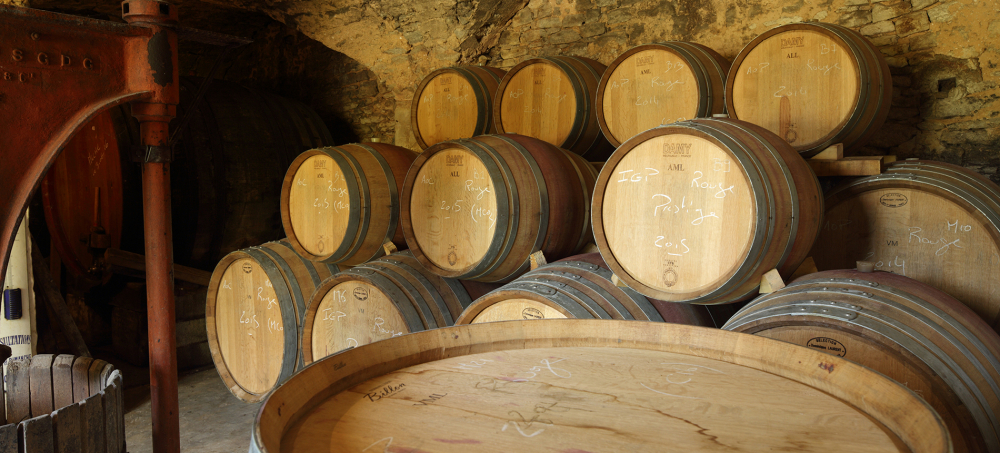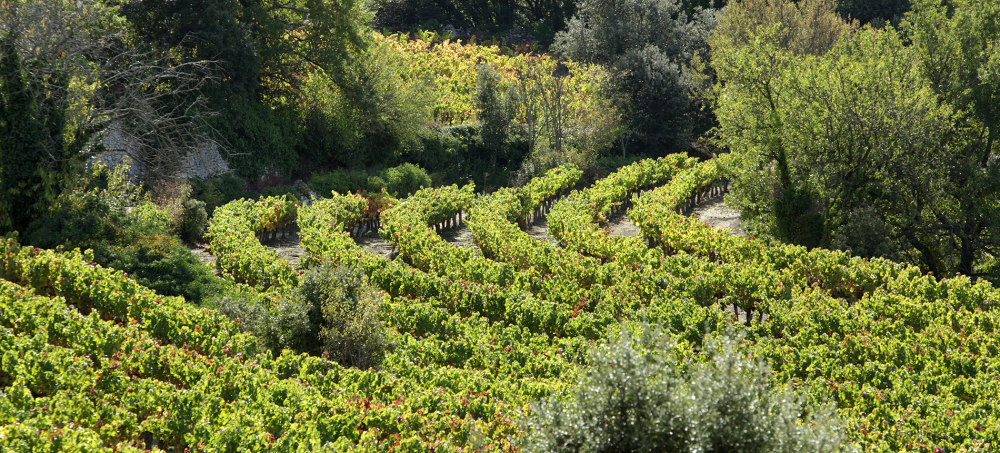To visit Chateau La Canorgue is to enter a dreamy Provencale landscape steeped in history. So much so that the property was selected as the setting for the film version of Peter Mayle’s famous book, “A Good Year” that was released in 2006. Located in the picturesque Luberon village of Bonnieux, this estate dates back 5 generations of the Margan Family who to this day still inhabit the 17th century manor home that sits near the entrance to the property. According to the current proprietor, Nathalie Margan, the property itself dates back to the Roman era and has always been a privileged agricultural site due to its natural underground springs that help plants of all kinds to survive even in the driest of years!
Despite this long history, the modern era of this venerable property really started in the 1970’s when Nathalie’s father, Jean-Pierre, decided to move back and dedicate himself full time to running the estate and making wine. After World War II and throughout the 50’s and 60’s, many of the vines were left to die and by the time that Jean-Pierre arrived, there were only a few hectares that had survived and were still being used to make wine.
Upon his return, Margan threw himself into replanting and revitalizing family’s estate. He also decided to convert the vineyards to Organic Viticulture and was actually the first in the region to do so. Alas, this was the era of full-on chemical-aided viticulture in France so this was a bit revolutionary at the time. Soon thereafter, Jean-Pierre decided to begin using principles of Biodynamic farming inspired by the teachings of Rudolf Steiner. This apparently raised the eyebrows of many on his vineyard team who at the time in fact questioned the virtue of these “radical” practices!?
Nonetheless, he stuck to his guns and to this day the winery continues farm using organics and biodynamics. In fact, they still often use the original dynamizer-mixer from the 70’s to produce their biodynamic treatments as an homage to their 50+-year commitment to natural farming!
Today the Chateau La Canorgue comprises 67 contiguous hectares of which 37 HA are planted to vineyards surrounded by forests. These vineyard sites are separated into 105 separate little parcels each with its own slightly different microclimate, soil type, exposition and elevation. Depending on the site, they grow Roussanne, Marsanne, Clairette, Grenache Blanc, Bourboulenc, Rolle (Vermentino), and Viognier for white wine, and Syrah, Grenache, Carignan, Mourvèdre, Cabernet Sauvignon, Merlot and Gamay used for red and rosé. During the growing season, the Margans are big believers in low yields, and target a modest 30 hectoliters per hectare – about half of the average in the region - to help build intensity and complexity for their wines.
At harvest, grapes are all harvested by hand often in the morning when the grapes are cooler. Given the diversity of sites and grape varieties, the harvest takes place over protracted period, usually at least several weeks if not well over a month. For certain cuvées, when the conditions are right, they employ an unusual technique of a progressive fermentation where they add later harvested grapes and/or juice to the fermenting must to prolong the fermentation. Once the wines are dry, they move to some combination of tanks, foudres, demi-muids and amphora for the élévage.
Chateau La Canorgue makes a wide range of wines including a couple of fresh, crisp rosés and aromatic, textured whites, but its flagship is certainly the Luberon Rouge. It is a blend of around 60% Syrah, 30% Grenache and the balance older vines of Carignane and Mourvedre. Spicy, bold and flavorful with an intoxicating overlay of aromatic southern French herbs and garrigue, it is perhaps the ultimate Provençale barbecue wine!
